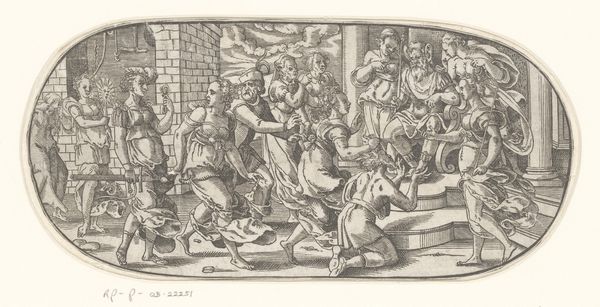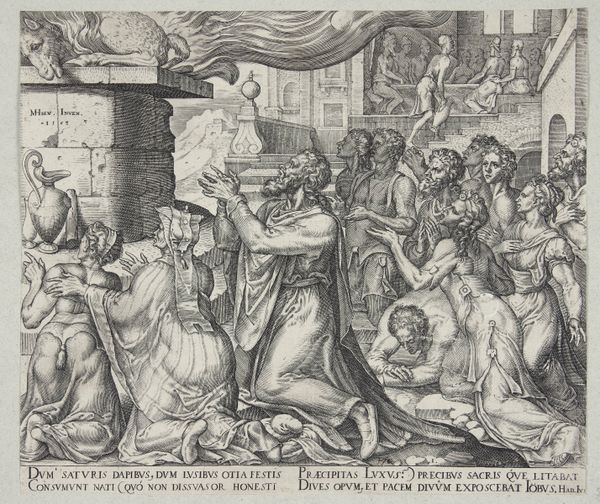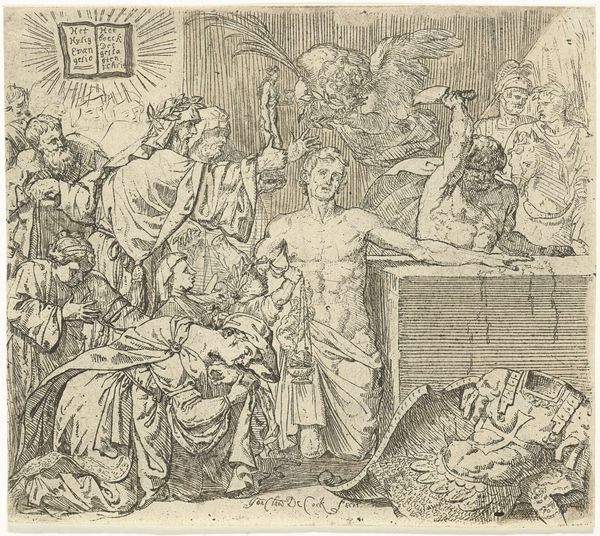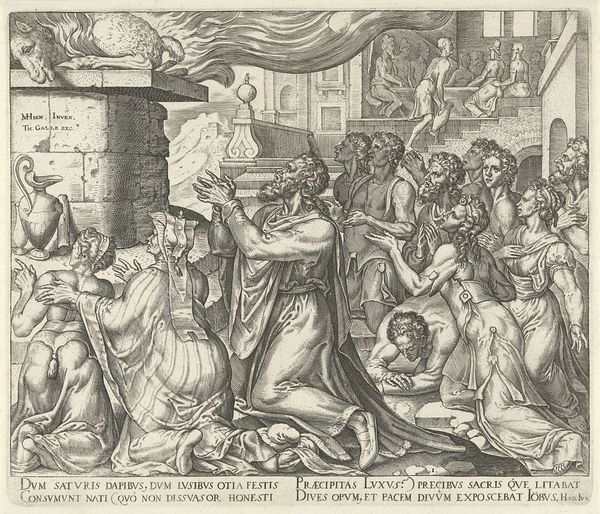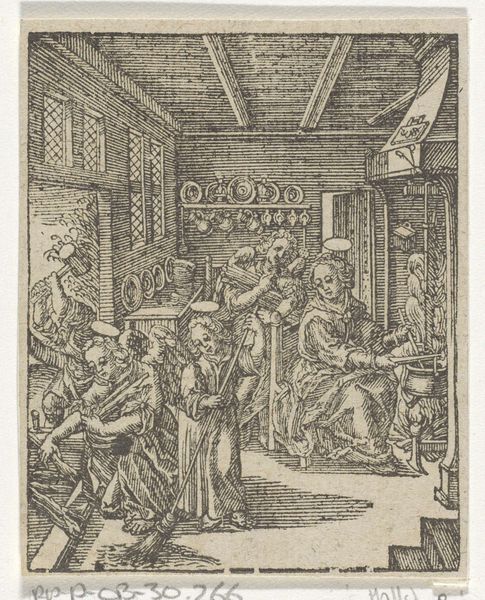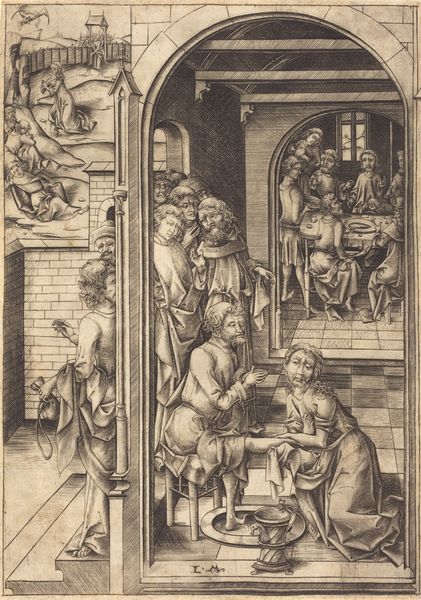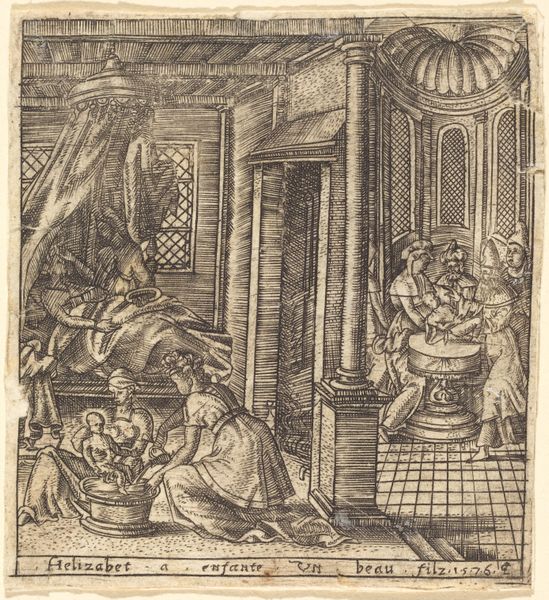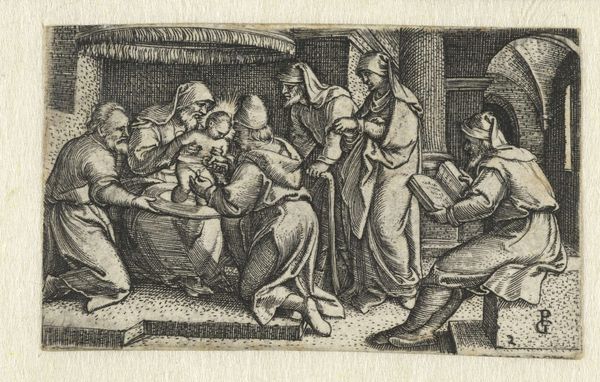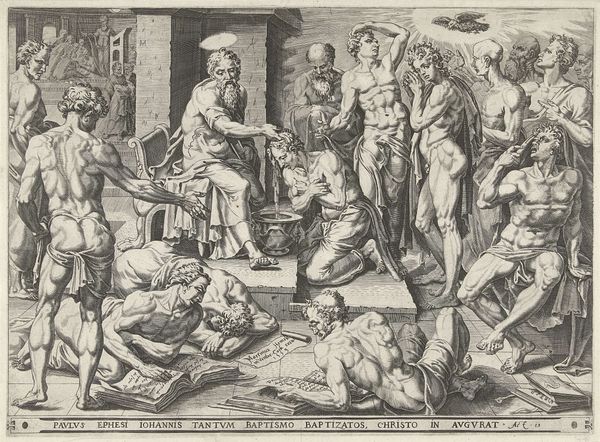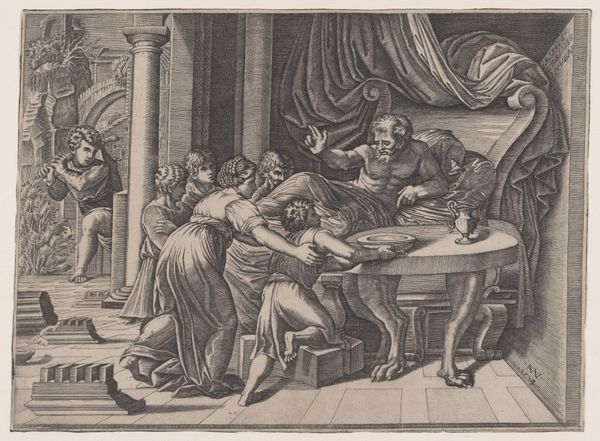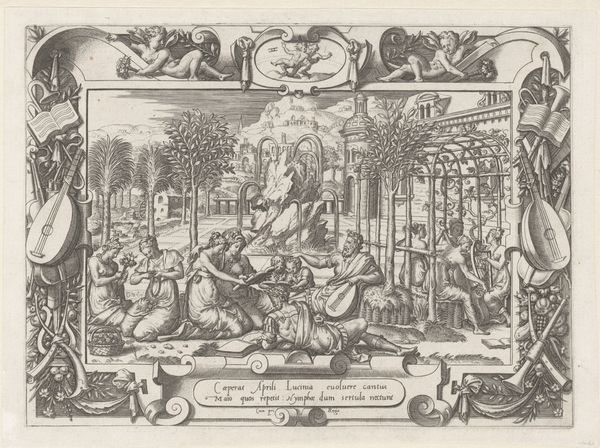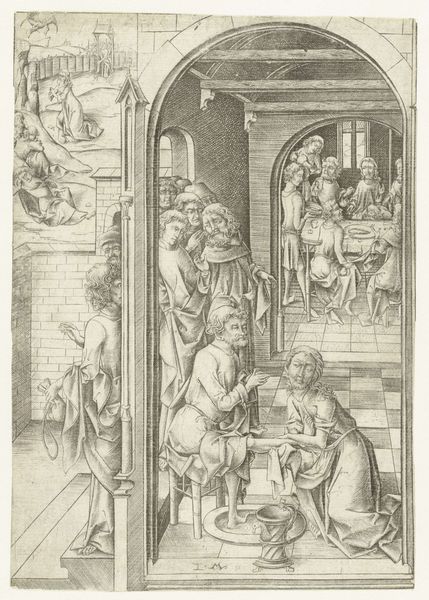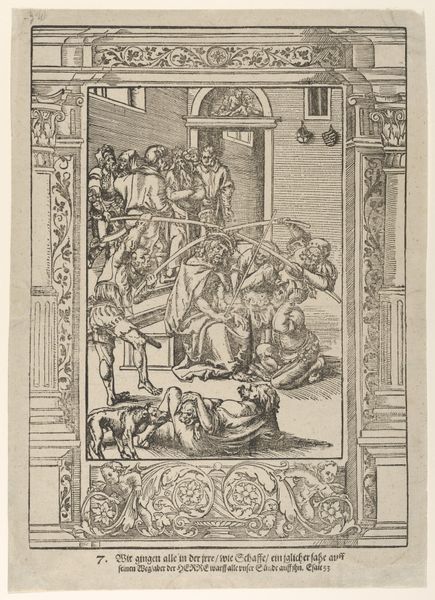
print, engraving
#
narrative-art
#
pen drawing
# print
#
pen illustration
#
pen sketch
#
figuration
#
line
#
genre-painting
#
northern-renaissance
#
engraving
Dimensions: height 348 mm, width 483 mm
Copyright: Rijks Museum: Open Domain
Curator: This is "The Fat Kitchen," a print attributed to Johannes or Lucas van Doetechum, dating from the late 16th century and residing here at the Rijksmuseum. The technique employed is engraving. Editor: My first impression is chaos. A very organized chaos, confined neatly within that elaborate, decorative border, but a depiction of total abandon nonetheless. Curator: The composition is divided rather distinctly into two realms: consumption on the left, and production, shall we say, on the right. Editor: Yes, and consider the labor implied! Look at the sheer quantity of food being prepared – the physical effort to manage the hearth, lift those heavy pots... the repetitive motions, not to mention the sourcing of the materials themselves. This isn’t simply about depicting gluttony; it's about illustrating the process, the making, the inherent social structure supporting such excess. Curator: Agreed. But notice how the composition itself directs the eye? The left side, devoted to the act of eating, unfolds with dynamic energy. See how the artist employs varying line weights to suggest depth and shadow? Editor: Those lines do create some striking figures. But I keep coming back to the cooks themselves, sweating over the fire, while others feast. Who are these workers? What's the power structure implicit in this division of labor? Are they paid? Indentured? We see their physical presence rendered in the piece itself. Curator: A crucial point. One could argue that the contrast reinforces a moral message about the dangers of excessive indulgence. It serves almost as a warning… Editor: Or perhaps it normalizes, subtly reinforcing the hierarchies. Look at the placement of bodies; the consumers presented with clean clothing and carefree leisure while the cooks are draped with laborious, often messy activity, suggesting they inhabit a different stratum. Curator: True, this arrangement also reinforces an allegory about prosperity and excess, depicted within a defined frame to give it order. Editor: Framing a discourse about labor. A crucial contrast that speaks to consumption, access and the hands required for its creation. It’s this act of ‘making’ that truly drives the discourse of this scene. Curator: A complex visual statement then, that invites layers of interpretation and contemplation. Editor: Absolutely; it's not simply about food but how systems produce excess, demanding our critical attention to those crucial relationships.
Comments
No comments
Be the first to comment and join the conversation on the ultimate creative platform.
